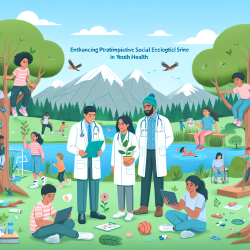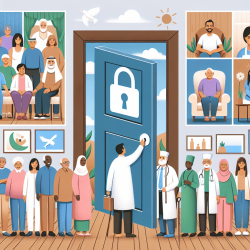Introduction
In the realm of youth health and wellbeing, resilience has traditionally been viewed as an individual trait, often neglecting the broader social and environmental contexts that influence outcomes. The research article "The Opportunity of Social Ecological Resilience in the Promotion of Youth Health and Wellbeing: A Narrative Review" offers a transformative perspective by emphasizing the social ecological resilience (SER) model. This model highlights the importance of social and environmental factors in shaping resilience and provides a framework for practitioners to enhance their interventions.
Understanding Social Ecological Resilience
The SER model, as outlined in the review, moves beyond individualistic approaches to resilience by incorporating four key layers:
- Personal: Individual traits and characteristics that support adaptation.
- Relational: Support networks, including family, peers, and community members.
- Structural: Non-relational aspects like schools, community organizations, and neighborhood safety.
- Spiritual/Cultural: Contextual aspects related to morals, ethics, and cultural values.
By understanding these layers, practitioners can develop more holistic interventions that address the multifaceted nature of resilience in youth.
Implications for Practitioners
For practitioners, the SER model offers actionable insights for improving youth health outcomes. Here are some ways practitioners can apply these insights:
- Integrate SER in Interventions: Develop programs that address not just individual traits but also relational and structural factors. For example, enhancing community support systems can bolster resilience.
- Focus on Equity: Recognize and address systemic barriers that impact youth resilience, such as socioeconomic disparities and access to resources.
- Collaborate with Communities: Engage with community organizations and stakeholders to create supportive environments that foster resilience.
Encouraging Further Research
While the SER model provides a robust framework, there is a need for continued research to refine and expand its application. Practitioners are encouraged to contribute to this growing body of knowledge by:
- Conducting longitudinal studies to assess the long-term impacts of SER-informed interventions.
- Exploring culturally specific resilience factors and their integration into practice.
- Engaging youth as co-researchers to gain insights into their perspectives on resilience.
Conclusion
The SER model represents a paradigm shift in understanding and promoting youth resilience. By adopting this model, practitioners can create more effective, equitable, and culturally sensitive interventions. As we continue to explore the complexities of resilience, the potential for improving youth health and wellbeing becomes increasingly promising.
To read the original research paper, please follow this link: The Opportunity of Social Ecological Resilience in the Promotion of Youth Health and Wellbeing: A Narrative Review.










